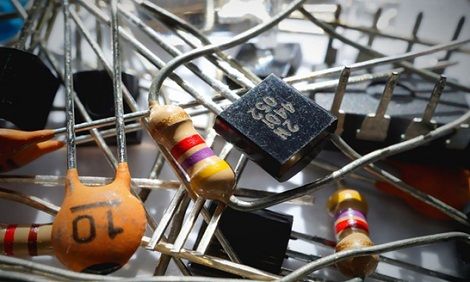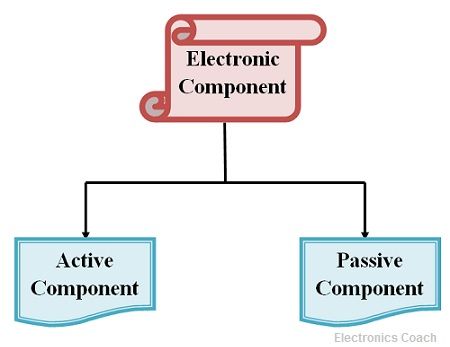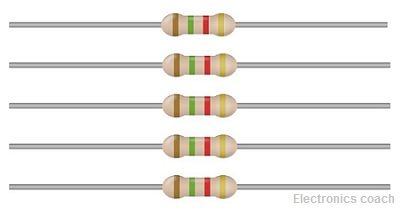Definition: Electronic components are the elements of circuit which helps in its functioning. They can be classified into two types i.e. Active Components and Passive Components. Active elements are those which possess gain. They can give energy to the circuit. On the contrary passive elements do not possess gain and they cannot give energy continuously to the circuit.
Passive components cannot amplify or energize the energy of the signal associated with them, they can only attenuate it, while active components can energize or amplify the signal.
For example, transistors, amplifiers are active elements. While resistor, inductor, capacitor are passive elements as they cannot supply energy to the circuit.

No, you cannot design a circuit or synthesize it before connecting a passive element in it. Passive elements holds significance in processing of various tasks.
To understand the importance of Resistor, let us consider a circuit consisting of diode and voltage source at input. If the current though the diode becomes excessive large then it may lead to the damage of the diode. The condition may become worse due to breakdown of circuit. Thus, it is very crucial to limit the value of current through the diode to protect it.
Another significant passive devices are inductor and capacitor which stores energy supplied by active device. If inductor and capacitor is not placed in a circuit, the energy flowing from active source will continue to flow and will cease to flow only when the device switches to off state. Thus, energy will not be stored anywhere in the circuit. Such a processing is totally futile if we cannot use the stored energy during the inactive state of the voltage source.
The capacitor stores energy in the form of electric field and the inductor stores energy in the form of magnetic field. When the active source is switched ON the capacitor starts get charging and get charged to its peak value. When the active source is switched off the capacitor will starts get discharging and provides energy to the circuit even when the active source is OFF.
Similarly, inductor also performs the same activity. But it stores energy in the form of magnetic field.
Classsification of Electronic Components
Electronic component can be defined into various types based on various parameter such as measurement components, power supply components etc.
- Elementary Components based on design architecture: Diodes, Transistors, resistors, capacitors, inductors, LED etc. These are the basic components of a circuit as without these components the circuit cannot not process or work properly.

- Power Supply Components: DC power supplies, AC power supply, signal generators are the components which fall in this category. These are also the considered as active components as they supply energy to the circuit.
- Measurement devices: Cathode ray oscilloscope and millimeters are usual measurement devices in electronic circuits.

The above diagram shows the classification of electronic Components. Let’s discuss each of this briefly.
Active Components
Active devices supply energy to the circuit. We have already discussed that what are those devices which belongs in this category. Now, let’s put light on some of these devices.
(i) Transistor: Transistor is formed from two words “Transfer” and “Resistor”. Thus, it transfers resistance from one part of circuit to other. If at input side the resistance is high then the resistance at the output side will be low. Transistor is a three terminal device which can act as a switch or an amplifier. It can be controlled either by voltage or current thus it is called voltage controlled device or a current controlled device.

(ii) Batteries: Batteries generate electrical energy by the process of electrochemical reaction which takes place inside it. The chemicals present in the battery undergo transformation to convert chemical energy into electrical energy. It is a vital part of every electronic circuit as it supplied power to the circuit without which the circuit cannot process signals.

(iii) Cathode Ray Tube: It is used in picture tube in television circuit. It is controlled by an electron gun. Electron beam strikes the phosphor screen and it gets illuminated.
Passive Components
These are the components which obstruct the current or supplied energy.
Some of the most commonly used passive devices are discussed below:
(i) Resistor: Resistor has the characteristics to provide hinderance or obstruction in the path of current. Resistors are generally used as current limiter for protecting active components from breakdown.

Thus, resistance is connected in series with the active components to protect excess current to flow from them. Besides, the resistance also acts as a load.
(ii) Inductor: Inductor allows DC to pass through it and block AC. It provides low resistance to DC while high resistance to AC. Thus, it is used in the devices which are used in application where AC ripples are not desirable. Besides, inductor stores energy in the form of magnetic field.
(iii) Capacitor: Capacitor is used in the circuit to store electric charge. It is significant in rectifier circuit, filter circuit etc. Besides, the property of capacitor to provide low reactance to AC and high resistance to DC is of vital importance in case of voltage regulator circuit. It filters AC ripples.

These devices are significant because without these passive devices, active devices cannot accomplish their function. For Ex: Transistor when used to amplify weak signal it cannot amplify it in the absence of load resistor. And resistor is a passive device. Thus, passive devices are also significant in electronics circuits.
Hung Hoang says
Very Informative blog! I love this fruitful content and hope people are also enjoying this. Thanks for sharing this informative content about PCB manufacturing.
CBO says
Thanks for sharing this nice post. I like your posts very much.
Aliop Kevin says
I really enjoyed reading this blog and hope everyone else is enjoying it as well. Thanks again for posting this valuable information about PCB manufacturing.
petterson says
Thank you for providing us with this valuable information on PCB manufacturing. I really enjoyed reading your blog. I hope others will as well.
Allison lu says
nice!!